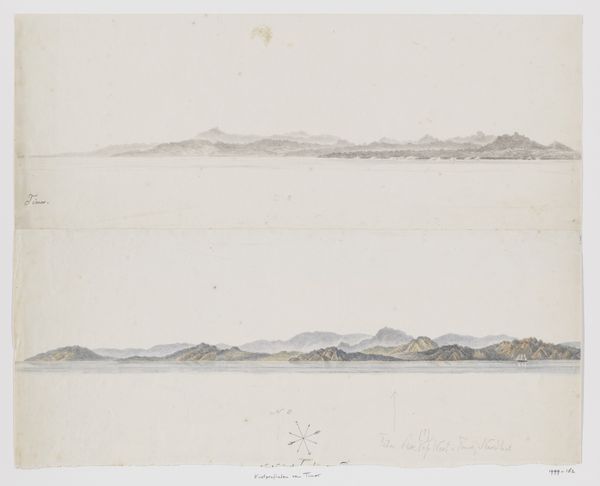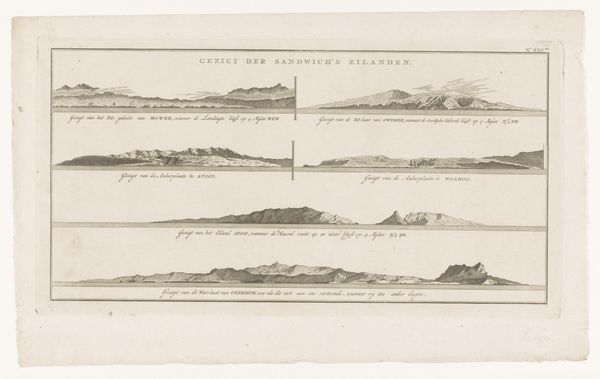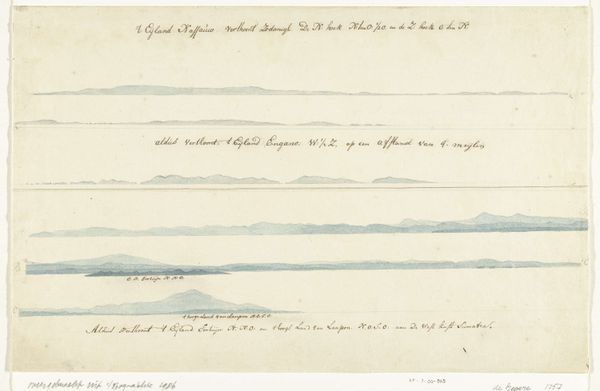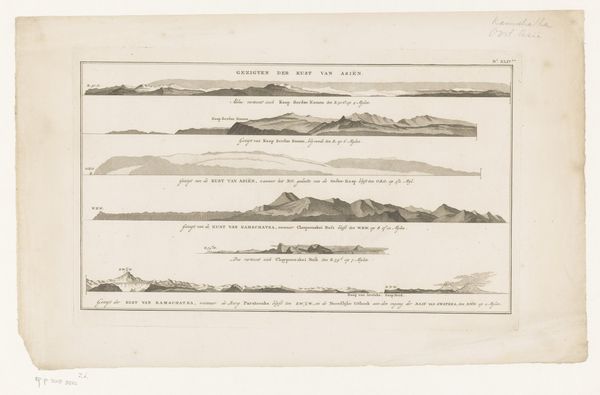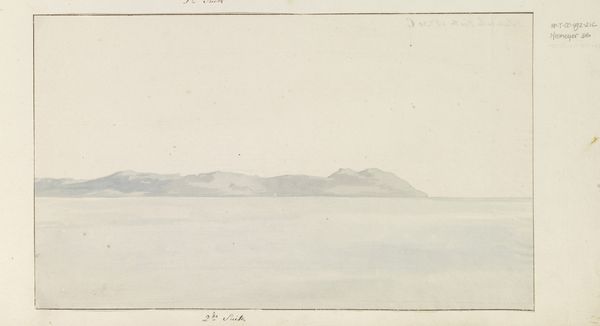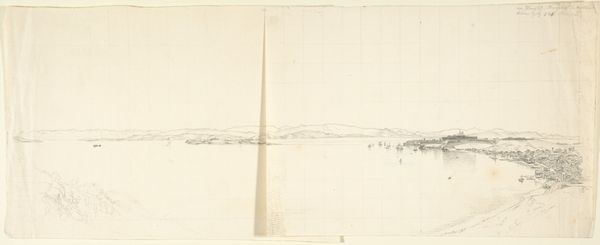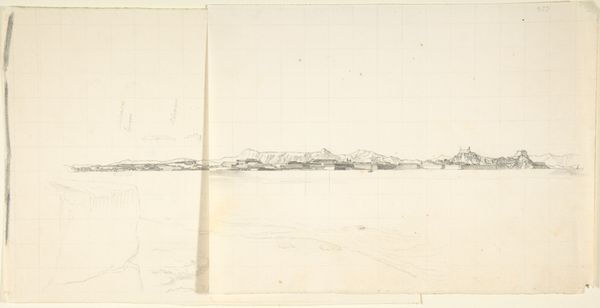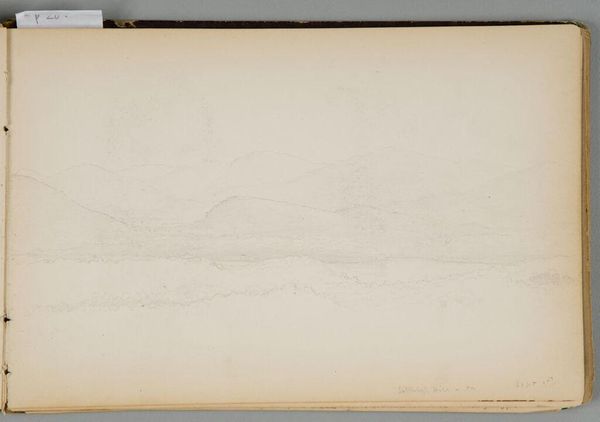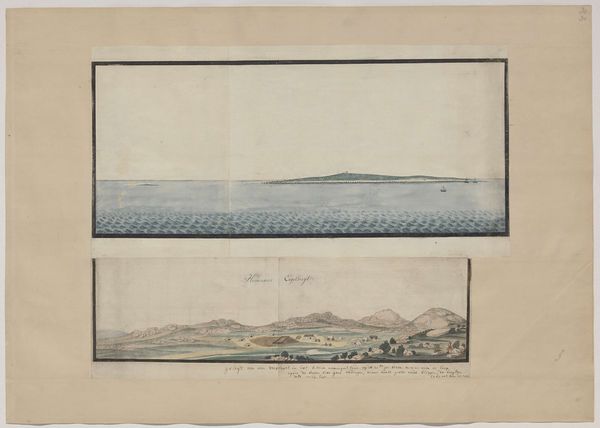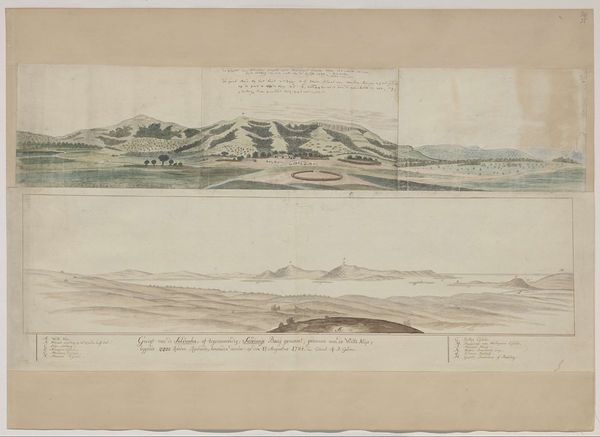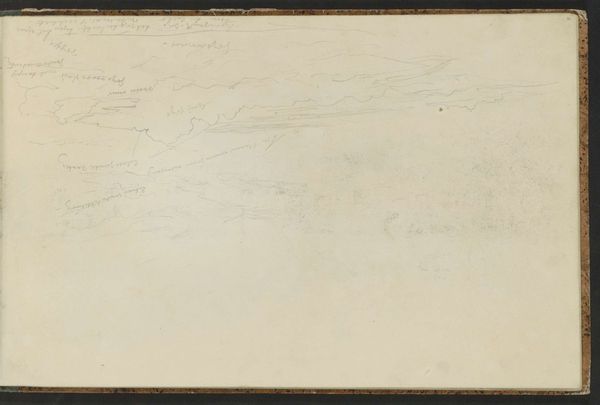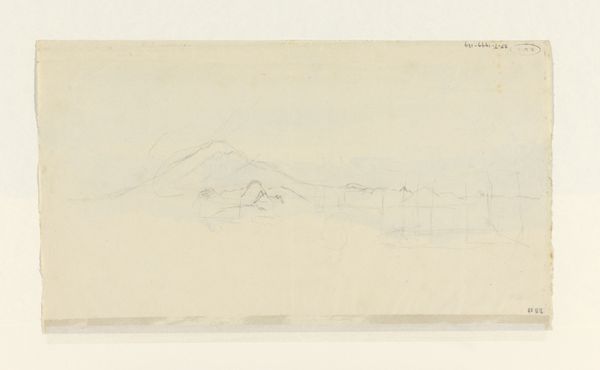
drawing, pencil
#
drawing
#
landscape
#
pencil
#
realism
Dimensions: height 145 mm, width 319 mm
Copyright: Rijks Museum: Open Domain
Editor: Here we have J. G. van der Does’ “Drie kustprofielen,” or “Three Coastal Profiles,” made sometime between 1843 and 1848, using pencil. It’s interesting how he’s chosen to depict these landscapes as simple profiles, one on top of the other. What do you see in this piece? Curator: I see an opportunity to discuss artistic production as labor. The use of pencil, a readily available and inexpensive material, suggests an accessible means of creation. Were these drawings commissioned, or personal studies? Who had access to these coastal views and the leisure to render them? Editor: That's an interesting point. I hadn't considered the social implications of simply choosing to draw something like this. Curator: The repetitive act of drawing each profile highlights the labor involved. Notice also the meticulous labeling with geographic markers. This transforms the drawings from mere landscapes into something akin to geographical or scientific documentation. The very act of measuring and recording shifts the art away from pure aesthetics, aligning it more closely with the values of a burgeoning industrial society, valuing observation and accurate measurement above artistic flourish. Editor: So, it's less about the beauty of the coastline, and more about the process and the social context in which this artwork was created? Curator: Precisely! The work embodies a shift towards a materialist understanding of art – where the means of production, the availability of materials, and the societal role of the artist all become central to interpreting the work's meaning. It is a product of its time, made possible by both material availability and the societal value placed on documenting and understanding the physical world. Editor: That makes me see this simple drawing in a completely new light. I’ll never look at pencil landscapes the same way again! Curator: Indeed. By examining the "how" and "why" of its creation, we gain deeper insights than by focusing solely on its representational qualities.
Comments
No comments
Be the first to comment and join the conversation on the ultimate creative platform.
